On the Sinfulness of Pleasure
Eugène Delacroix’s The Death of Sardanapalus
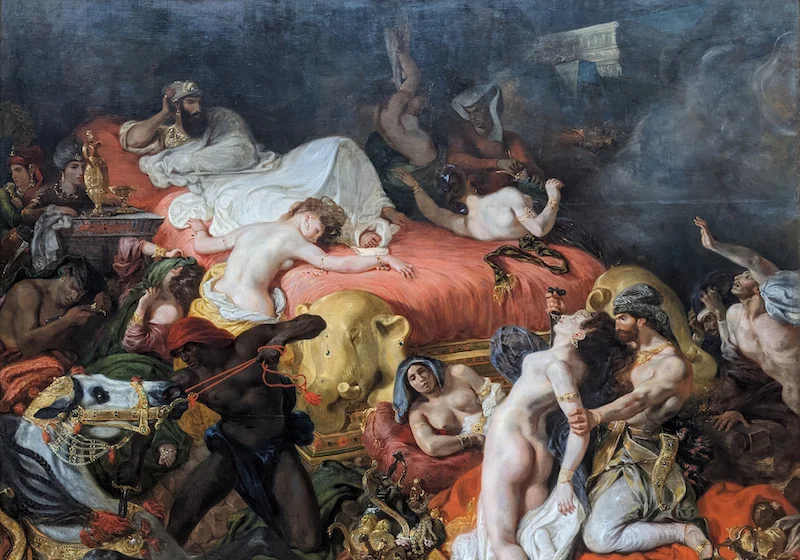
‘The Death of Sardanapalus’ by Eugène Delacroix (1827). Musée du Louvre, Paris, France/Wikimedia commons
The Death of Sardanapalus (La Mort de Sardanapale, 1827) by Eugène Delacroix
This painting is located in the Louvre Museum in Paris, France.
All the information that we have about Sardanapalus, the mythical last king of Assyria, comes from ancient Greco-Roman sources. All the original sources are lost, and all quotes and references to the king refer to authors and works that have not survived, leading to fragmented and unreliable versions of his reign. Historians have tried to compare the image of Sardanapalus with real Assyrian kings, including Ashurbanipal, Sennacherib, Sin-shar-ishkun, and others, but each attempt has been, in general, questionable. None of the actual kings’ biographies correspond with Sardanapalus’s.
According to an ancient legend, Sardanapalus ruled Nineveh (in some sources, Babylon) in the eighth century BCE. ‘Ruled’ is perhaps an overstatement: he didn't concern himself with the kingdom's affairs and preferred to spend his days in the harem. There, he entertained himself with concubines and eunuchs, dressed in women’s clothing, spun thread, wove, and painted his face. This last activity especially outraged the Greeks and Romans, although it was likely true of any Assyrian king. Men in Mesopotamia, even the harshest warriors, had long used makeup, applying cosmetics, outlining their eyes, using perfumes, and sometimes even drawing patterns on their faces. However, they did this for purely practical reasons. Makeup helped prevent the effects of the harsh sun, strong-smelling perfumes kept away insects, and the patterns had ritual significance demonstrating reverence to the gods.
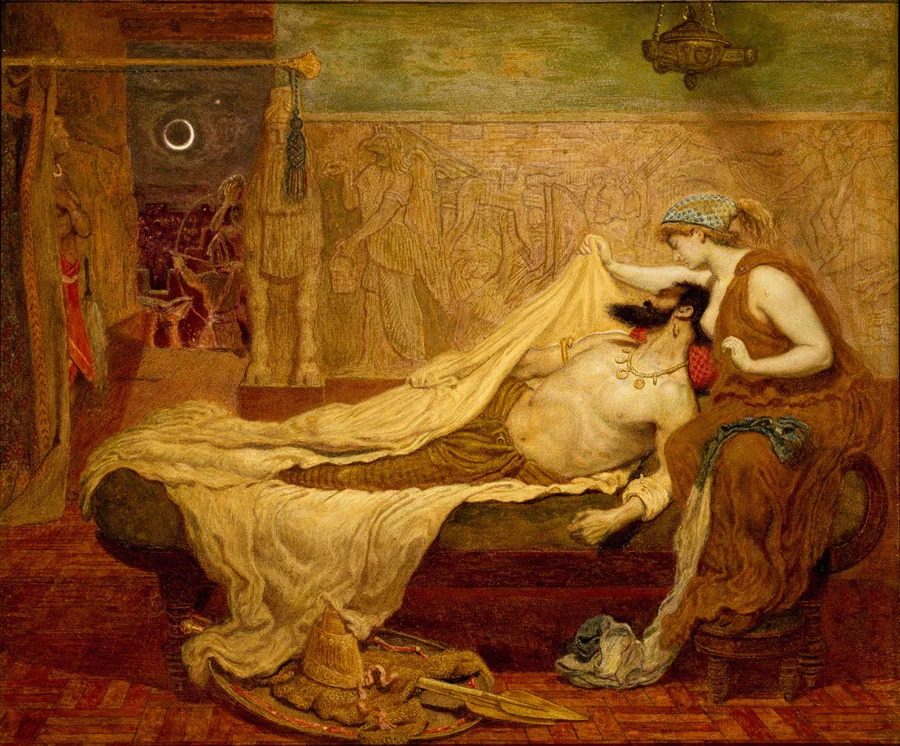
The Dream of Sardanapalus by Madox Brown (1871)/Delaware Art Museum/Wikimedia commons
Sardanapalus, occupied with spinning, wives, and other harem matters, left the governance of the army and the country to his relatives, who failed miserably at managing these. The people suffered, his enemies took liberties at the borders, and the nobility wove conspiracies. One of these conspiracies succeeded, and the rebels surrounded and set fire to the capital. Sardanapalus, realizing that all was lost, threw a farewell feast in his palace, surrounding himself with incredible riches, magnificent horses, beautiful concubines, and incomparable youths. He ordered all these living treasures to be slaughtered and then arranged a grand fiery funeral for himself, burning down the palace with everything inside.
The Romans particularly loved the image of Sardanapalus—he served as a cautionary figure for the Caesars. Writing negative things about a reigning emperor was risky, but writing angrily about the despicable, debauched Sardanapalus made it clear to everyone who was being criticized. Sardanapalus was often compared to the unfortunate young Elagabalus (who was the emperor of Rome from 218 to 222 CE) after he was murdered. After all, they needed to explain to the public why the ruler was killed. Why, it was because he painted his face, of course, and not because he occupied a position that someone else coveted. Thus, Sardanapalus entered human consciousness as an example of a ruler indulging in sinful luxury at the expense of the country's welfare.
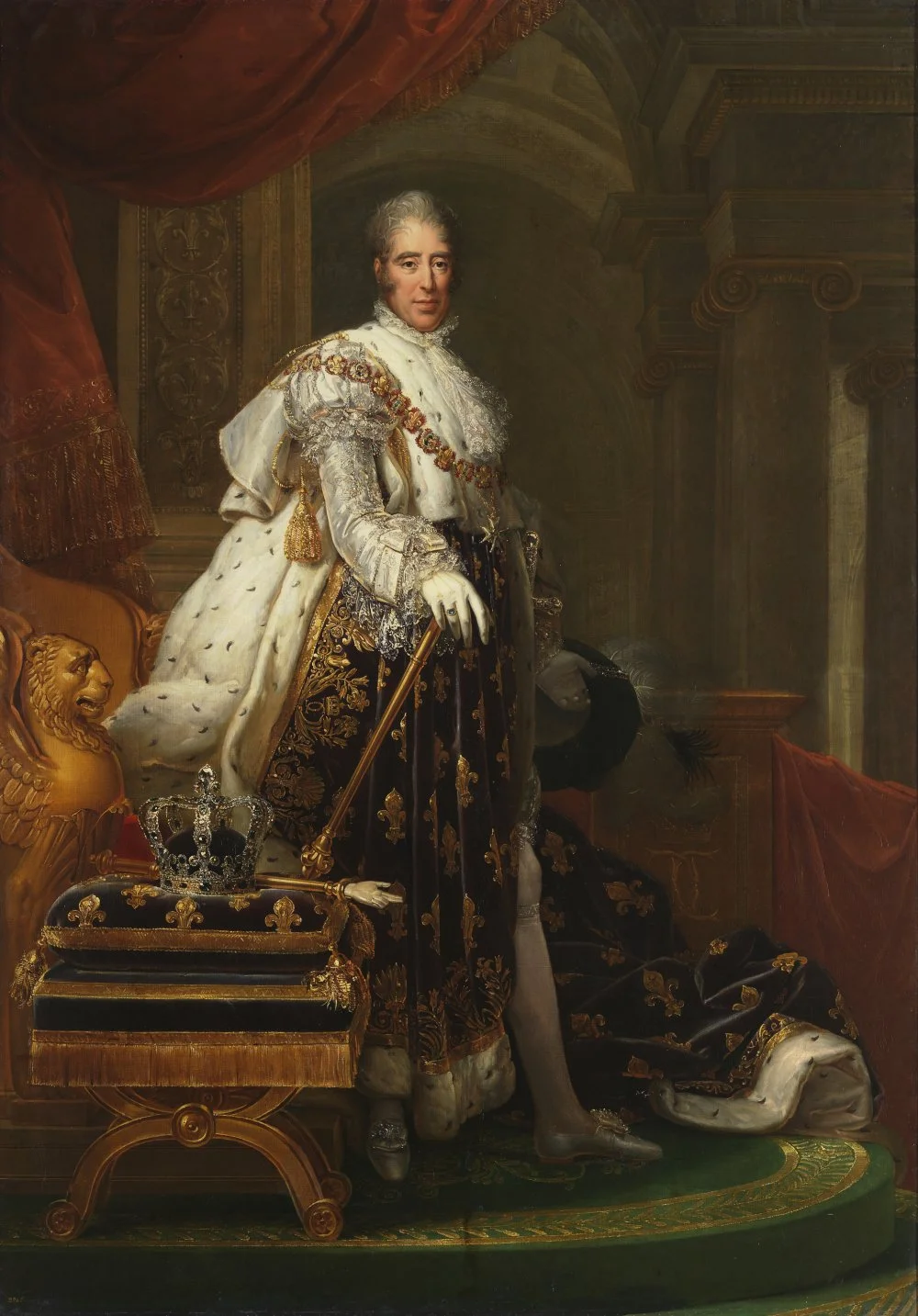
Portrait of Charles X of France by François Gérard (1825)/Museo Nacional del Prado/Wikimedia commons
In 1827, when Eugène Delacroix painted The Death of Sardanapalus, the mythical king’s example was still relevant. The then King of France, Charles X, was tightening the noose on freedom of the press and speech, political crises followed one after another, money flowed in torrents into select pockets, and the air was filled with the anticipation of a new revolution, which came three years later. The artist himself, interestingly, did not suffer at this time and was quite favored by the authorities, who were generous to artists, showering them with awards and financing their ideas. But Delacroix, sensitive to the public mood, still felt it his duty to paint this warning to rulers. Moreover, the progressive public was then in love with the recently deceased Lord Byron,1
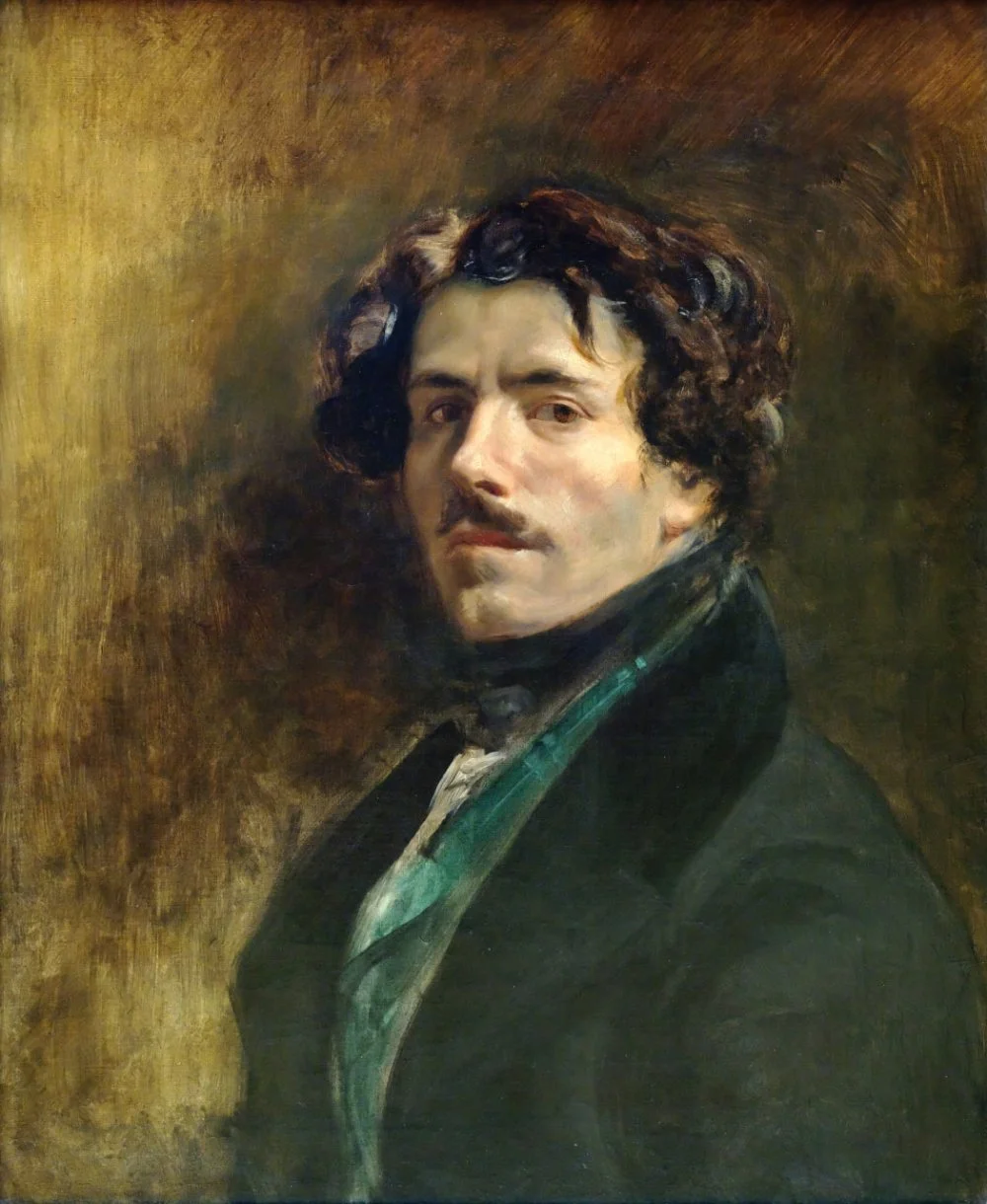
Autoportrait by Eugène_Delacroix (1837 )/Musée du Louvre/Wikimedia commons
In the painting, we see the king reclining on a bed supported by carved elephants. The elephants' tusks have been cut off, a symbol of the loss of power. In the background, the city is burning. The guards are killing concubines under the ruler’s empty, dead gaze. Gold and other treasures are scattered like meaningless debris on the floor.
Delacroix wrote that his painting was a warning to those who do not follow the path of virtue. However, contemporary critics claimed that it was not a warning, but an abomination, harshly criticizing the painting for its ‘horror’, ‘cruelty’, and ‘indecent naturalism’, and most of all, for the overly cluttered foreground, which was considered an unacceptable deviation from the painting canon at the time. Nevertheless, none of these criticisms prevented The Death of Sardanapalus from eventually becoming one of the recognized masterpieces of Romanticism and earning its place in the Louvre.
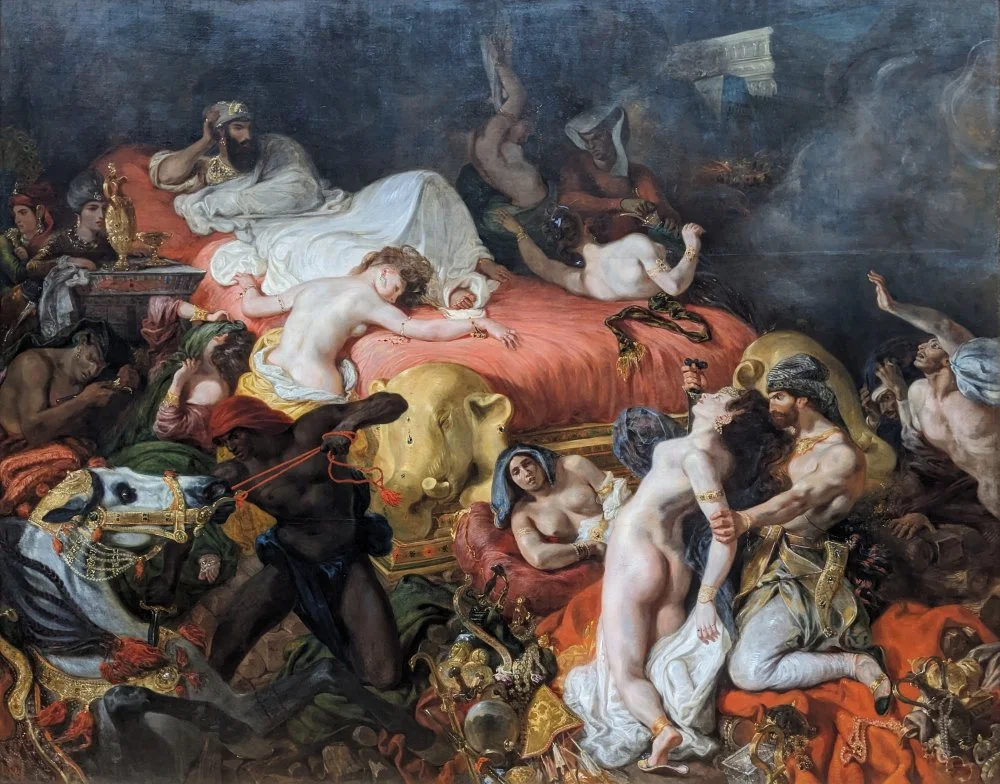
‘The Death of Sardanapalus’ by Eugène Delacroix (1827). Musée du Louvre, Paris, France/Wikimedia commons



